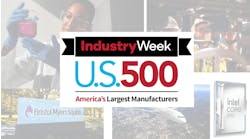Four Memorable Enhancements for Your Presentation
People are sometimes so focused on making their business presentation "correct" -- communicating all of the essential information -- that they forget to make it stand out. Chances are that you don't just want to inform your audience, you want to wow them -- to create a presentation that they're sure to remember.
The best business presentations come from more than just using the right words. It's about ensuring that every detail – from the environment to the physical materials – are truly memorable. The following tips are based on years of experience working with companies to raise the level of their presentations.
1. Distribute custom-printed handouts.
It's a good idea to give your audience a physical representation of your presentation—be it a pamphlet, brochure or flyer. Handouts can act as a lasting reminder of your message long after the presentation is over as well as make it easy and convenient for recipients to take your desired action.
This shouldn't be a word-for-word transcript of your oral speech, however; otherwise you're likely to see people looking down at their paper when they should be looking and listening to you. Instead, give your audience supplemental materials or simply an outline of your main bullet points.
Don't be afraid to think outside the box, especially when it comes to the shape of your paper materials. Plenty of people are used to receiving the standard rectangular handouts and leave-behinds. Try having your stock die-cut to match your brand; for example, a flyer in the shape of your company logo is likely to attract attention (and get passed around to others).
Don't expect your audience to carry around a stack of loose, easily-misplaced papers. If you have multiple printed materials, place them inside a presentation folder to create an organized and compact package of information.
2. Use (but don't overuse) PowerPoint.
Multimedia is a great way to engage your audience's senses on multiple levels. A PowerPoint display during your presentation can help viewers to follow along and keep them interested, especially when blended with graphics, photos or music.
Again, don't make this an exact transcript of your speech; stick to general bullet points and be sure to illustrate them with charts, diagrams or other images whenever possible. Your PowerPoint media should support the rest of your presentation, but you should avoid making it the absolute center of attention.
You should also avoid going overboard and flooding your audience's senses with too much media at once. A wall of text or an overabundance of cheap clip art is only going to turn people off. Keep it simple and only use multimedia when it will enhance the effectiveness of your message.
Restrict your total number of slides to a minimum; the longer each slide is available for your audience to observe, the more time you'll have to reinforce your point (and allow it to sink in for your audience).
3. Incorporate video.
Video clips can help you to make your point in ways that words can't. After all, simply hearing about how great your product is won't have the same impact as actually seeing it in action. You could videotape a demonstration of your product or service, record testimonials from satisfied customers or even interview experts who can provide further insight.
Keep your video clips relatively short, especially if they're part of a longer multimedia presentation. You don't want to upstage yourself when you have a chance to engage with your audience in person. Video is a nice change of pace, but audiences are aware that it can be edited and polished and many observers will be suspicious of too much "hype." The more you can demonstrate in person, the more trustworthy you'll appear.
4. Bring product samples.
If the nature of your product or service allows for it, bring along a sample so that your audience can see it for themselves. You may even want to perform a demonstration if your product is particularly impressive. Examples could include showing the various objects a blender is capable of mixing, displaying an extensive variety of beach apparel or allowing an audience member to attempt to break an especially durable pair of sunglasses. Demonstrating your product in the "real world" will lend you an extra dose of credibility.
If possible, you might even want to bring enough samples so that your audience can take one home with them. This will help to ingratiate yourself as well as give your recipients the opportunity to show the product to their peers, giving you some free word-of-mouth advertising.
None of these enhancements can make up for a poorly written or performed presentation; you should still focus on the meat and potatoes before adding extra garnish. Still, if you use these tips for your next corporate event, you just might turn a few extra heads.
Vladimir Gendelman is the CEO of Company Folders, an online folder service that creates folders and other print marketing materials.




